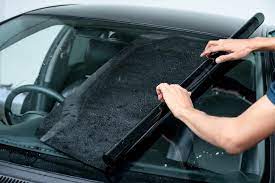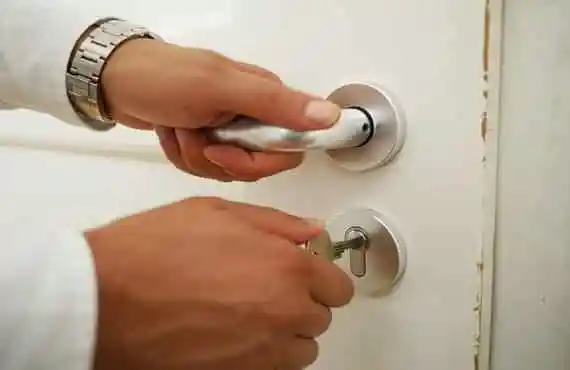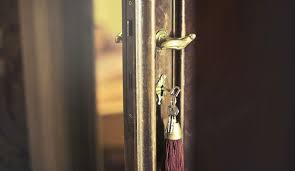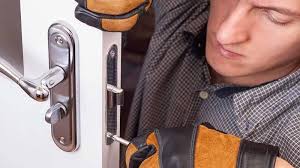What Is Lock Snapping and How Can You Prevent It?
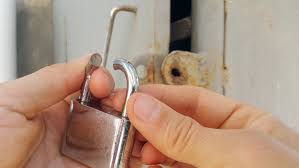
In recent years, one method of forced entry has become a growing concern for homeowners and locksmiths alike—lock snapping. This technique, used by opportunistic intruders, allows quick and quiet access to a property by exploiting the weaknesses of certain types of locks. If you’re a homeowner looking to improve your security, understanding what lock snapping is and how to prevent it is crucial. Consulting a professional locksmith in Birmingham Alabama can help you identify if your home is at risk and what immediate steps you can take to protect it.
Lock snapping primarily targets Euro cylinder locks, which are widely used in doors across the UK, Europe, and increasingly, in homes throughout the U.S., including Alabama. Unfortunately, these locks can be snapped in under 30 seconds with no specialized tools, making them an easy target for burglars. In this guide, we’ll explore how the lock snapping technique works, why certain locks are vulnerable, and what you can do to safeguard your property.
What Is Lock Snapping?
Lock snapping is a method of breaking into a property by physically snapping a lock cylinder in half. Once the lock is broken, the intruder can easily manipulate the mechanism inside and open the door. This attack is most commonly used on uPVC and composite doors fitted with Euro profile cylinders.
The technique doesn’t require advanced tools or much skill. A burglar simply applies force to the cylinder—often using household tools like pliers or screwdrivers—to break it at its weakest point. Once the front section is removed, the locking mechanism becomes exposed and can be turned manually.
Unfortunately, because many older locks don’t have reinforcement features, this method leaves homes highly vulnerable. Even modern-looking doors can still have outdated or low-grade cylinders that offer no protection against snapping.
How Lock Snapping Works?
To understand lock snapping, it's helpful to consider how a Euro cylinder lock is built. These locks consist of a central barrel housed inside the door. Most standard cylinders have a break point around the middle, which aligns with the door’s handle or escutcheon. This is exactly where the lock is most vulnerable.
Here’s a simple breakdown of the process (for informational awareness, not instructional purposes):
The intruder removes the exterior handle or escutcheon to expose the cylinder.
Force is applied to snap the lock along its weak point.
Once snapped, the internal cam is revealed and rotated, unlocking the door.
This method takes very little time and creates minimal noise, which is why it’s favored for quick burglaries in residential areas—often occurring while residents are away at work or even asleep upstairs.
Why Euro Cylinder Locks Are Vulnerable
Euro cylinders became popular for their interchangeable nature and ease of installation. However, their popularity also led to mass production, often without adequate consideration for break-in resistance.
Key vulnerabilities include:
Thin cylinder walls that break easily
Lack of anti-snap reinforcement pins or steel rods
Protruding designs that give easy access to the lock face
Older installations are especially vulnerable, and burglars are known to specifically look for these types of locks when casing a neighborhood. If your locks haven’t been updated in the last ten years, there's a high chance you could be at risk.
Real-World Impact on Homeowners
Lock snapping has become such a widespread issue in some areas that local police departments have issued public warnings and security guidance. Homeowners affected by these break-ins often report no signs of forced entry other than a broken cylinder—leaving them shocked at how quickly their homes were breached.
Aside from the obvious financial losses and emotional distress, victims often feel violated and unsafe in their own homes afterward. That’s why prevention is so important. Taking steps now can help you avoid becoming a statistic.
How to Prevent Lock Snapping
Preventing lock snapping is largely about upgrading to snap-resistant locks. Today’s security market offers anti-snap cylinders designed specifically to combat this threat. These locks feature sacrificial sections that snap away during an attack, but leave the central mechanism protected, rendering the method ineffective.
To stay protected, consider the following:
Install locks that meet the TS007 3-star rating or SS312 Diamond Standard. These ratings indicate tested resistance to snapping, drilling, and bumping.
Replace outdated or poorly fitted locks, especially if they protrude from the door by more than 3mm.
Work with a professional locksmith who can assess your home and recommend the best anti-snap solutions for your doors.
This is one of the few areas in home security where upgrading a small component can dramatically improve your overall protection.
Additional Measures to Enhance Security
While changing your locks is the most effective step, a layered approach to security is always best. Along with anti-snap cylinders, consider reinforcing other vulnerable entry points:
Install high-quality door handles with cylinder guards to reduce access to the lock
Upgrade to multi-point locking systems, which distribute locking pressure across multiple points
Use security cameras or smart doorbells to deter would-be intruders
Add motion-sensor lighting near all entry doors
These improvements don’t just reduce the likelihood of break-ins—they also give homeowners peace of mind and better control over their environment.
Professional Installation Matters
While it might be tempting to handle lock upgrades yourself, improper installation can leave even the best cylinders vulnerable. If the lock sits too far out from the door frame or isn’t properly secured, it may still be easy to snap.
Hiring a certified locksmith ensures that your anti-snap cylinders are properly measured, installed, and tested. A knowledgeable locksmith in Birmingham Alabama will also be familiar with the types of locks most commonly used in your area, which means they’ll know exactly what upgrades are most urgent and effective.
What to Expect from a Lock Security Assessment
A thorough home security assessment by a locksmith typically includes:
Reviewing all external doors and existing locks
Measuring cylinder protrusion and checking for snap-resistant features
Recommending upgrades based on your home's layout, age, and exposure
Most locksmiths will also review secondary entries like garages, sheds, and patio doors—often the weakest points in home security. Even doors that seem secure can benefit from small but significant enhancements.
Staying Ahead of Evolving Threats
Lock snapping isn’t the only method criminals use to access homes, but it’s one of the fastest and quietest. As criminals adapt and evolve their techniques, so too must homeowners.
The good news is that manufacturers continue to develop smarter, more durable locks. From electronic smart locks to advanced mechanical cylinders, there are a range of options available for every budget. The key is staying informed and proactive.
Even newer homes can be vulnerable if builders opted for standard cylinders during construction. It’s always worth having a professional inspect your doors—particularly if you’ve recently moved in or haven’t updated your security in several years.
Conclusion
Your home’s security is only as strong as its weakest lock. With lock snapping on the rise, especially targeting common Euro cylinder designs, homeowners must act decisively to protect their families and property. Fortunately, with modern anti-snap technology and expert help from a trusted Residential locksmith in Birmingham Alabama, defending your home is easier and more effective than ever before. Don’t wait until a break-in happens—take the first step toward stronger home security today by reviewing your existing locks and upgrading where needed.
Note: IndiBlogHub features both user-submitted and editorial content. We do not verify third-party contributions. Read our Disclaimer and Privacy Policyfor details.



